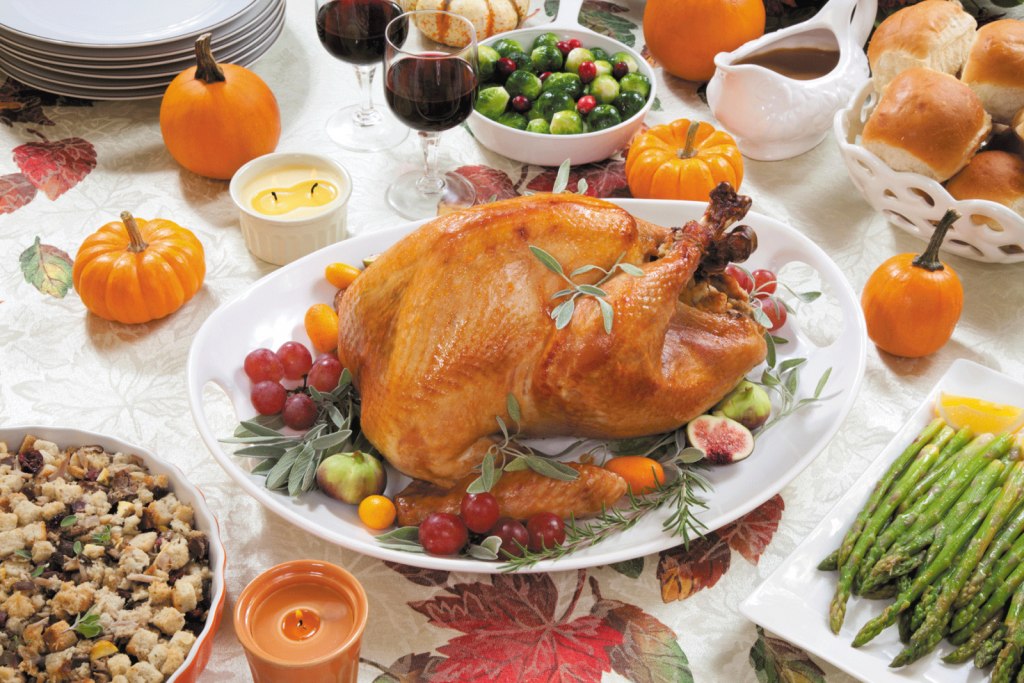The Role of Nutrition in Running Performance
October 14, 2016 in Nutrition
I’m just a few days away from running the Scotiabank Toronto Waterfront Half Marathon with a fellow RD friend! All of our training, including early morning and evening runs, in the sweltering heat or cold rain, will be put to the test as we attempt to run 21km along Toronto’s lakeshore. We successfully completed this same run last year, with the only goal of just finishing the course (and ended up beating our anticipated time by 25 minutes!) This year, with a faster goal time in mind, I know that proper nutrition is key for optimizing my performance during training and on race day.
If you are an endurance runner, this information may come in handy to prevent you from burning out early and finishing your race strong.
There’s nothing worse than feeling overly full and bloated during a run, which can cause acid reflux, cramping, and a slower pace. Choosing the right foods to fuel your workout is key, and should be based on the duration and intensity of your exercise, the climate, your sweat rate, and personal preferences. Some people can eat a large meal right before a run and feel great, while others need a particular combination of foods a few hours before. Regardless, it is important to try out your pre-run eating regimen before race day to ensure that you know how your body will respond.
Important Nutrients:
Carbohydrates: This macronutrient is the main source of fuel for your muscles and brain. Your muscles (and liver) store carbohydrates as glycogen, which is broken down during exercise to supply energy to your working muscles. Without adequate glycogen stores, you may feel tired and fatigued, leading to less than optimal performance.
Carbohydrates are separated into complex and simple carbs. Complex carbs are part of a healthy, balanced diet, including whole grain bread, oatmeal, brown rice, starchy vegetables, and legumes. These should be consumed throughout a training regimen, as they provide long lasting energy and keep blood glucose levels stable. Simple carbs provide a quick energy boost, which can come in handy during long runs (> 1 hour). These include white flour, sugary cereal, juice, dried fruit, sports drinks and gels.
Before exercise: Include a source of complex or simple carbohydrates 1-4 hours before exercise to allow for proper digestion.
During exercise: Aim for 30-60 grams of carbohydrates per hour if running for longer than an hour. Examples include: 1 bagel, 1 large banana, 5 dates, 2 cups of fruit-flavoured sports drink, 13 saltine crackers, or 1 energy gel. These should be lower in fibre and easy to digest to avoid bloating and cramping.
After exercise: If exercising for more than hour, it is important to consume a carbohydrate-rich meal or snack (with protein) afterwards to replenish glycogen stores. This will ensure that you are energized for your next run. Examples include: chocolate milk, a peanut butter or turkey sandwich, fruit and yogurt smoothie, chicken with sweet potato and vegetables, or egg and vegetable scramble with toast, depending on how long your run was. It is important to eat at least a snack within 30 minutes post-exercise, and a balanced meal within 2 hours.
Protein: This macronutrient is important for repairing, building and maintaining muscle. While the recommended protein needs for an average healthy person are 0.8 grams per kilograms of body weight (g/kg), those who exercise regularly and intensely can require 1.0-2.0 g/kg. So, for a 70kg individual, that would be anywhere from 56 to 140 g/d, depending on their level and type of physical activity.
Before exercise: Protein can help you feel satisfied longer, which is important during a long run. However, since it takes longer to digest, limiting the portion size and consuming it a few hours before can help prevent discomfort. Choose protein sources that in lower in fat, such as skim milk, 0% yogurt, chicken breast, fish, nut butters, tofu, and lentils.
During exercise: Pure protein will not provide you with the quick energy burst the same way that carbohydrates do.
After exercise: To promote muscle repair and growth, adequate protein during recovery is key. It is recommended to have 15-25g of protein within 30 minutes after the run, in combination with carbohydrates, and every few hours afterwards to continue muscle protein synthesis. Examples include: 75g of meat/poultry/fish, 2 eggs, ½ cup cottage cheese, ¾ cup Greek yogurt, ¼ cup hemp seeds, 1 scoop protein powder.
Fluid & Electrolytes: Hydration is absolutely key on any regular day, but especially during intense exercise where fluid and electrolytes are lost through sweat. Daily fluid requirements are 2-3 L for adequate hydration. Dehydration can cause extreme thirst, dizziness, muscle cramps, and overheating. Salt is the main electrolyte lost with sweat, so it is important to replenish this during long exercise as well.
Before exercise: It is recommended to drink 1-2 cups (250-500mL) of fluid 4 hours before, and ½- 1 ½ cups (125-375mL) 2 hours or less before exercise. Although water is the best choice, 100% fruit juice, sports drinks, milk, tea, and coffee also count as fluid, but may cause discomfort. Ensuring plenty of fluid the night before is also important.
During exercise: If exercising for less than an hour in a mild temperature, water should be adequate. For longer duration, intensity, and in hot climates, sports drinks will provide the necessary fluid, carbohydrate, and electrolytes to properly hydrate and energize you.
After exercise: If you notice immediate weight loss after exercise, this is water loss. For every 1 pound of weight lost, consume 2-3 cups of fluid (ideally water and sports drinks). Continue to hydrate throughout the day. In addition, high protein liquids (e.g. protein smoothie, chocolate milk) may be better tolerated immediately after a long run when appetite is suppressed.
My race day plan:
- Breakfast: a peanut butter & jam sandwich on white bread, ½ cup orange juice, 1 banana, a coffee and water.
- During the run: 1 gel, 3 carb gummies, water/sports drinks from the stations.
- Right after the run: chocolate milk, Greek yogurt, sports drink (and whatever other free samples they are handing out).
- Post-run meal: hamburger, fries, milkshake (I deserve it! Plus, it supplies carbohydrate, protein and fat).
Note: This is what I know works best for my body. Overall, you know your body best and how it responds to various foods and beverages with exercise. AGAIN, do not try anything new on race day! Nutrition plays a huge role in sports performance, so nourish your body with the nutrients that it needs!
To all marathoners running this weekend, and endurance runners training for their next event, good luck!!
References:
- http://www.todaysdietitian.com/newarchives/030810p...
- https://www.sportsdietitians.com.au/wp-content/upl...
- http://www.dietitians.ca/Your-Health/Nutrition-A-Z...
- http://www.nutritionrx.ca/practical-examples-of-ho...
- http://www.eatright.org/resource/fitness/training-...
- http://www.pennutrition.com/KnowledgePathway.aspx?...





